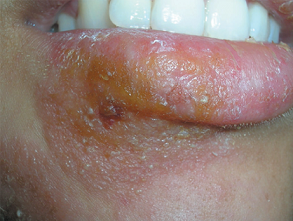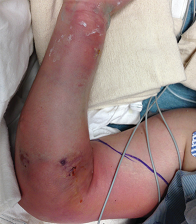Understanding Streptococcus Infection: A Comprehensive Guide
Introduction to Streptococcus Infection
Streptococcus is a genus of bacteria commonly found in the human body, particularly in the throat and on the skin. While some streptococcal species are harmless, others can cause a variety of infections.
- What is Streptococcus?
- Streptococcus is a genus of gram-positive bacteria.
- Known for causing a variety of diseases in humans and animals.
- Divided into multiple groups, the most notable being Group A and Group B.
Types of Streptococcus Bacteria;
Group A Streptococcus (GAS)
- Scientific Name: Streptococcus pyogenes
- Characteristics:
- Beta-hemolytic: Completely lyses red blood cells, creating clear zones around colonies on blood agar.
- Possesses M protein, a major virulence factor.
- Diseases Caused:
- Strep throat (pharyngitis)
- Scarlet fever
- Rheumatic fever
- Impetigo
- Cellulitis
- Necrotizing fasciitis (flesh-eating disease)
- Toxic shock syndrome
Group B Streptococcus (GBS)
- Scientific Name: Streptococcus agalactiae
- Characteristics:
- Beta-hemolytic or non-hemolytic.
- Commonly found in the digestive and lower reproductive tracts.
- Diseases Caused:
- Neonatal sepsis
- Neonatal meningitis
- Pneumonia
- Urinary tract infections (UTIs) in adults
- Bacteremia and sepsis in elderly or immunocompromised individuals
Group C and G Streptococcus
- Scientific Names: Includes Streptococcus dysgalactiae and Streptococcus equisimilis
- Characteristics:
- Beta-hemolytic.
- Similar in appearance and behavior to GAS.
- Diseases Caused:
- Pharyngitis
- Skin infections
- Occasionally causes severe invasive infections like bacteremia and endocarditis
Group D Streptococcus
- Scientific Names: Includes Streptococcus bovis and Enterococcus species
- Characteristics:
- Alpha or non-hemolytic.
- Part of normal gastrointestinal flora.
- Diseases Caused:
- Bacteremia
- Endocarditis
- Association with colorectal cancer (especially Streptococcus gallolyticus)
Streptococcus pneumoniae
- Scientific Name: Streptococcus pneumoniae
- Characteristics:
- Alpha-hemolytic: Partially lyses red blood cells, creating greenish zones around colonies on blood agar.
- Encapsulated, with over 90 different serotypes.
- Diseases Caused:
- Pneumonia
- Meningitis
- Otitis media (middle ear infection)
- Sinusitis
- Bacteremia
Streptococcus Viridans Group
- Scientific Names: Includes species like Streptococcus mutans, Streptococcus mitis, and Streptococcus sanguinis
- Characteristics:
- Alpha or non-hemolytic.
- Part of the normal oral and gastrointestinal flora.
- Diseases Caused:
- Dental caries (tooth decay) primarily by Streptococcus mutans
- Infective endocarditis
- Abscesses in various body sites
Streptococcus milleri Group
- Scientific Names: Includes Streptococcus anginosus, Streptococcus intermedius, and Streptococcus constellates
- Characteristics:
- Variable hemolytic patterns.
- Commonly associated with abscess formation.
- Diseases Caused:
- Abscesses in the brain, liver, and other organs
- Bacteremia
Enterococcus (formerly Group D Streptococcus)
- Scientific Names: Enterococcus faecalis, Enterococcus faecium
- Characteristics:
- Gamma-hemolytic (non-hemolytic) or alpha-hemolytic.
- Part of the normal intestinal flora.
- Diseases Caused:
- Urinary tract infections
- Bacteremia
- Endocarditis
- Intra-abdominal and pelvic infections
Common Diseases Caused by Streptococcus
Group A Streptococcus (GAS) Diseases
-
Strep Throat (Pharyngitis)
- Symptoms: Sore throat, fever, swollen lymph nodes, headache, red and swollen tonsils, sometimes with white patches or streaks of pus.
- Transmission: Respiratory droplets from coughs or sneezes of an infected person.
- Treatment: Antibiotics such as penicillin or amoxicillin; supportive care for symptoms.
-
Scarlet Fever
- Symptoms: Red rash with a sandpaper-like texture, high fever, sore throat, red lines in skin folds, flushed face with a pale area around the mouth, “strawberry” tongue.
- Transmission: Respiratory droplets; often follows untreated strep throat.
- Treatment: Antibiotics; supportive care for symptoms.
-
Impetigo
- Symptoms: Red sores or blisters that burst, ooze, and develop honey-colored crusts; typically affects the face and extremities.
- Transmission: Direct contact with sores or nasal discharge from an infected person.
- Treatment: Topical or oral antibiotics; maintaining good hygiene to prevent spread.

-
Necrotizing Fasciitis (Flesh-Eating Disease)
- Symptoms: Severe pain and swelling, fever, red or purplish skin at the infection site, blisters, shock.
- Transmission: Bacteria entering through cuts, surgical wounds, or other breaks in the skin.
- Treatment: Immediate surgical removal of dead tissue, intravenous antibiotics, and intensive care.

-
Rheumatic Fever
- Symptoms: Inflammatory disease affecting the heart, joints, skin, and brain; symptoms include fever, painful and swollen joints, chest pain, heart murmur, fatigue.
- Transmission: Complication following untreated strep throat or scarlet fever.
- Treatment: Long-term antibiotics to prevent recurrence, anti-inflammatory medications, and treatment for any heart complications.
-
Toxic Shock Syndrome
- Symptoms: High fever, low blood pressure, rash resembling a sunburn, confusion, muscle aches, redness of eyes, mouth, and throat.
- Transmission: Often occurs in conjunction with skin infections or wounds.
- Treatment: Intensive care, intravenous antibiotics, and supportive care.
Group B Streptococcus (GBS) Diseases
-
Neonatal Sepsis
- Symptoms: Fever, difficulty feeding, irritability, lethargy, breathing problems, jaundice.
- Transmission: From mother to baby during childbirth.
- Treatment: Intravenous antibiotics; supportive care in a neonatal intensive care unit (NICU).
-
Neonatal Meningitis
- Symptoms: Fever, irritability, poor feeding, vomiting, stiffness in the neck or body.
- Transmission: From mother to baby during childbirth.
- Treatment: Intravenous antibiotics; supportive care in a NICU.
-
Pneumonia
- Symptoms: Fever, cough, difficulty breathing, chest pain.
- Transmission: Can be acquired during birth or through respiratory droplets.
- Treatment: Antibiotics; supportive care.
-
Urinary Tract Infections (UTIs)
- Symptoms: Frequent urination, pain or burning during urination, cloudy or strong-smelling urine, pelvic pain.
- Transmission: Bacteria ascending from the perineal area into the urinary tract.
- Treatment: Antibiotics; increased fluid intake.
Streptococcus pneumoniae Diseases
-
Pneumonia
- Symptoms: Fever, chills, cough with phlegm, chest pain, difficulty breathing.
- Transmission: Respiratory droplets from an infected person.
- Treatment: Antibiotics such as penicillin or macrolides; supportive care.
-
Meningitis
- Symptoms: High fever, severe headache, stiff neck, nausea, vomiting, sensitivity to light, confusion.
- Transmission: Respiratory droplets or spread from nearby infections such as sinusitis or otitis media.
- Treatment: Intravenous antibiotics; supportive care in a hospital setting.
-
Otitis Media (Middle Ear Infection)
- Symptoms: Ear pain, difficulty hearing, fluid drainage from the ear, fever, irritability in children.
- Transmission: Often follows upper respiratory infections; spread through respiratory droplets.
- Treatment: Antibiotics; pain management and sometimes surgical intervention (e.g., ear tubes).
-
Sinusitis
- Symptoms: Facial pain or pressure, nasal congestion, thick nasal discharge, reduced sense of smell, fever.
- Transmission: Often follows upper respiratory infections.
- Treatment: Antibiotics if bacterial; nasal decongestants and saline irrigation for symptom relief.
-
Bacteremia
- Symptoms: Fever, chills, rapid breathing or heart rate, confusion.
- Transmission: Spread from local infections like pneumonia or sinusitis.
- Treatment: Intravenous antibiotics; management in a hospital setting.
Viridans Group Streptococci Diseases
-
Dental Caries (Tooth Decay)
- Symptoms: Toothache, sensitivity, visible holes or pits in the teeth, brown or black staining on teeth.
- Transmission: Bacteria in the mouth metabolize sugars and produce acids that erode tooth enamel.
- Treatment: Dental fillings, root canals, proper oral hygiene, fluoride treatments.
-
Infective Endocarditis
- Symptoms: Fever, chills, heart murmur, fatigue, aching joints and muscles, shortness of breath.
- Transmission: Bacteria entering the bloodstream and adhering to damaged heart valves or endocardium.
- Treatment: Prolonged course of intravenous antibiotics; sometimes surgical intervention.
How Streptococcus Spreads:
- Direct Contact: Sharing utensils, kissing, or close contact with an infected person can spread the bacteria.
- Respiratory Droplets: Coughing or sneezing by an infected person can transmit the bacteria through droplets.
- Contaminated Surfaces: Touching surfaces contaminated with the bacteria and then touching your face can cause infection.
Symptoms of Streptococcus Infection (General):
- Fever
- Sore throat
- Swollen lymph nodes
- Skin rash (depending on the type of infection)
- Redness, swelling, and pain (in case of skin infections)
Diagnosis of Streptococcus Infection:
General Diagnostic Approaches
- Clinical Examination
- Initial assessment based on symptoms, medical history, and physical examination.
- Identification of common signs like sore throat, fever, rash, or skin lesions.
Specific Diagnostic Methods
Group A Streptococcus (GAS) Infections
-
Strep Throat
- Rapid Antigen Detection Test (RADT)
- Quick, in-office test using a throat swab.
- Provides results within minutes.
- High specificity but variable sensitivity; negative results may require confirmation with a throat culture.
- Throat Culture
- Gold standard for diagnosis.
- Throat swab is cultured on a blood agar plate.
- Results available in 24-48 hours.
- Can detect carriers of the bacteria.
- Rapid Antigen Detection Test (RADT)
-
Skin Infections (Impetigo, Cellulitis)
- Bacterial Culture
- Swab from the lesion or wound cultured on appropriate media.
- Identification of GAS through characteristic colony morphology and biochemical tests.
- Bacterial Culture
-
Invasive Infections (Necrotizing Fasciitis, Toxic Shock Syndrome)
- Blood Cultures
- Multiple blood samples cultured to detect bacteremia.
- Essential for diagnosing systemic infections.
- Imaging Studies
- MRI or CT scans to assess the extent of tissue involvement.
- Tissue Biopsy
- Surgical removal and culture of affected tissue.
- Blood Cultures
Group B Streptococcus (GBS) Infections
-
Neonatal Infections (Sepsis, Meningitis)
- Blood Cultures
- Critical for detecting bacteremia in newborns.
- Cerebrospinal Fluid (CSF) Analysis
- Lumbar puncture to obtain CSF.
- Culture and Gram staining to identify GBS in cases of meningitis.
- Blood Cultures
-
Screening in Pregnant Women
- Vaginal and Rectal Swabs
- Collected between 35-37 weeks of pregnancy.
- Cultured to identify GBS colonization.
- Positive results indicate the need for intrapartum antibiotic prophylaxis.
- Vaginal and Rectal Swabs
Streptococcus pneumoniae Infections
-
Pneumonia
- Sputum Culture
- Sputum sample cultured to identify the presence of S. pneumoniae.
- Chest X-ray
- Imaging to confirm the presence of pneumonia.
- Urinary Antigen Test
- Detects pneumococcal antigens in urine.
- Useful in adults with pneumonia.
- Sputum Culture
-
Meningitis
- Cerebrospinal Fluid (CSF) Analysis
- Lumbar puncture to obtain CSF.
- Gram stain, culture, and PCR to detect S. pneumoniae.
- Blood Cultures
- Detects bacteremia and helps identify the causative organism.
- Cerebrospinal Fluid (CSF) Analysis
-
Otitis Media and Sinusitis
- Middle Ear Fluid Culture
- Obtained via tympanocentesis in severe or recurrent cases.
- Sinus Aspirate Culture
- Sample taken from sinus cavities for culture.
- Middle Ear Fluid Culture
Viridans Group Streptococci Infections
-
Dental Caries
- Clinical Examination
- Visual inspection and probing to identify cavities.
- Bacterial Culture
- Plaque samples cultured to identify Streptococcus mutans.
- Clinical Examination
-
Infective Endocarditis
- Blood Cultures
- Multiple samples taken over 24 hours to detect bacteremia.
- Echocardiography
- Imaging to visualize heart valves and detect vegetations.
- Blood Cultures
Advanced Diagnostic Techniques
- Polymerase Chain Reaction (PCR)
- Detects streptococcal DNA in various specimens.
- Highly sensitive and specific.
- Useful for rapid diagnosis of invasive infections.
- Serological Tests
- Detect antibodies against streptococcal antigens.
- Useful in diagnosing post-streptococcal complications like rheumatic fever or glomerulonephritis.
Treatment of Streptococcus Infection;
General Principles of Treatment
- Early Diagnosis and Prompt Treatment:
- Crucial to prevent complications and reduce transmission.
- Tailored to the specific type of Streptococcus and site of infection.
- Antibiotic Therapy:
- Primary mode of treatment for streptococcal infections.
- Choice of antibiotic depends on the type of infection and patient factors.
Specific Treatments for Streptococcal Infections
Group A Streptococcus (GAS) Infections
-
Strep Throat (Pharyngitis)
- First-line Treatment:
- Penicillin V:
- Amoxicillin: Alternative to penicillin.
- Penicillin Allergy:
- Cephalexin (if mild allergy).
- Clindamycin or Azithromycin (if severe allergy).
- First-line Treatment:
-
Scarlet Fever
- Treated similarly to strep throat.
- Penicillin V or Amoxicillin .
- Symptomatic treatment for rash and fever.
-
Impetigo
- Topical Antibiotics:
- Mupirocin or Retapamulin for localized infection.
- Oral Antibiotics:
- Cephalexin, Dicloxacillin, or Clindamycin for extensive infection.
- Topical Antibiotics:
-
Necrotizing Fasciitis
- Immediate Surgical Debridement:
- Essential to remove necrotic tissue.
- Intravenous Antibiotics:
- Penicillin G plus Clindamycin to inhibit toxin production.
- Broad-spectrum coverage initially, then tailored based on culture results.
- Immediate Surgical Debridement:
-
Rheumatic Fever
- Antibiotics:
- Penicillin V or Amoxicillin to eradicate GAS.
- Anti-inflammatory Treatment:
- Aspirin or Corticosteroids for joint inflammation.
- Long-term Prophylaxis:
- Continuous antibiotics (e.g., monthly penicillin injections) to prevent recurrence.
- Antibiotics:
-
Toxic Shock Syndrome
- Intensive Care:
- Supportive care for shock and organ failure.
- Intravenous Antibiotics:
- Combination of Clindamycin and Penicillin G.
- Intensive Care:
Group B Streptococcus (GBS) Infections
-
Neonatal Sepsis and Meningitis
- Intravenous Antibiotics:
- Ampicillin plus Gentamicin initially.
- Tailored based on culture results.
- Intravenous Antibiotics:
-
Pregnant Women Screening Positive for GBS
- Intrapartum Antibiotic Prophylaxis:
- Penicillin G or Ampicillin during labor.
- Clindamycin or Vancomycin for penicillin-allergic patients.
- Intrapartum Antibiotic Prophylaxis:
-
Adult GBS Infections (e.g., UTIs, Bacteremia)
- Oral or Intravenous Antibiotics:
- Penicillin, Amoxicillin, or Ceftriaxone.
- Oral or Intravenous Antibiotics:
Streptococcus pneumoniae Infections
-
Pneumonia
- Oral Antibiotics for Outpatient Treatment:
- Amoxicillin, Doxycycline, or Macrolides (e.g., Azithromycin).
- Intravenous Antibiotics for Inpatient Treatment:
- Ceftriaxone or Cefotaxime.
- Consider Vancomycin or Linezolid for suspected drug-resistant strains.
- Oral Antibiotics for Outpatient Treatment:
-
Meningitis
- Intravenous Antibiotics:
- Ceftriaxone or Cefotaxime plus Vancomycin.
- Dexamethasone adjunct therapy to reduce inflammation.
- Intravenous Antibiotics:
-
Otitis Media
- First-line Treatment:
- Amoxicillin.
- Alternatives for Resistant Cases:
- Amoxicillin-Clavulanate or Cefdinir.
- First-line Treatment:
-
Sinusitis
- First-line Treatment:
- Amoxicillin-Clavulanate.
- Alternatives for Penicillin Allergy:
- Doxycycline or Levofloxacin.
- First-line Treatment:
Viridans Group Streptococci Infections
-
Dental Caries
- Dental Interventions:
- Fillings, crowns, or root canals as needed.
- Preventive Measures:
- Good oral hygiene, fluoride treatments, and regular dental check-ups.
- Dental Interventions:
-
Infective Endocarditis
- Intravenous Antibiotics:
- Prolonged course (4-6 weeks) of Penicillin G or Ceftriaxone.
- Gentamicin may be added for synergistic effect.
- Intravenous Antibiotics:
Supportive Care and Additional Measures
- Pain Management:
- Analgesics such as Acetaminophen or Ibuprofen.
- Hydration:
- Ensure adequate fluid intake, especially in febrile illnesses.
- Rest:
- Important for recovery from infections.
Prevention Strategies
-
Vaccination:
- Pneumococcal vaccines (PCV13, PPSV23) for prevention of Streptococcus pneumoniae infections.
-
Hygiene Practices:
- Hand washing, avoiding close contact with infected individuals, and covering mouth and nose when coughing or sneezing.
-
Screening and Prophylaxis:
- GBS screening in pregnant women and appropriate intrapartum antibiotic prophylaxis.
-
Practice good cough etiquette:
Cover your mouth and nose with a tissue when coughing or sneezing.
-
Don’t share personal items:
Avoid sharing utensils, towels, or other personal items with someone who is sick.
Conclusion
Streptococcus infections, ranging from mild illnesses like strep throat to severe conditions such as necrotizing fasciitis, present a significant health concern. Early and accurate diagnosis, combined with prompt and appropriate treatment, is vital to managing these infections effectively and preventing complications. Adhering to preventive measures, including good hygiene practices and vaccinations, further helps in reducing the spread and impact of these bacteria. Awareness and education about streptococcal infections empower individuals to seek timely medical attention, ensuring better health outcomes and safeguarding public health.
Important Note:
- This information is intended for general knowledge only and should not be a substitute for professional medical advice.
- If you suspect a streptococcal infection, consult your doctor for proper diagnosis and treatment.
Frequently Asked Questions (FAQs);
What is streptococcus
Streptococcus is a type of bacteria commonly found in the throat and on the skin. There are many different strains, some harmless and others that can cause infections.
What are the different types of streptococcus infections?
Group A streptococcal (GAS) infection: This is the most common type and can cause strep throat, impetigo (skin sores), scarlet fever, and serious invasive infections in rare cases. Strep pneumoniae: This strain can cause pneumonia, ear infections, and meningitis. Group B streptococcus (GBS): This is commonly found in the vagina and rectum of healthy women and can sometimes be passed to a newborn during delivery.
How are streptococcus infections spread?
Streptococcus bacteria spread through contact with respiratory droplets from coughs or sneezes, or through direct contact with infected wounds or sores.
What are the symptoms of a streptococcus infection?
Symptoms vary depending on the type of infection, but can include: Sore throat Fever Swollen glands Rash Muscle aches Nausea or vomiting
How is a streptococcus infection diagnosed?
Strep Throat: Rapid strep test: This in-office test uses a swab from the back of your throat to detect the presence of strep bacteria quickly. Results are usually available within minutes. Throat culture: If the rapid test is negative but your doctor still suspects strep, they may send a throat swab to a lab for culture. This takes longer (1-2 days) but can be more accurate in some cases. Skin Infections: Physical examination: Doctors can often diagnose skin infections like impetigo based on their appearance. Swab test: In some cases, a doctor may take a swab of the infected area to confirm the presence of strep bacteria. Other Infections: Blood tests: These can help identify strep bacteria in the bloodstream, indicative of a more serious infection. Swabs or fluid samples: Depending on the suspected location of the infection (e.g., ear, lung), a doctor may take a swab or fluid sample for culture. Imaging tests: X-rays or ultrasounds may be used in some cases to visualize complications from strep infections like pneumonia. In most cases, a combination of a physical exam, a rapid strep test (for strep throat), and possibly a throat culture or other tests is used to diagnose a streptococcus infection.
How is a streptococcus infection treated?
Streptococcus infections are primarily treated with antibiotics. The specific type of antibiotic and duration of treatment will depend on the severity and location of the infection. Here's a breakdown: Antibiotics: Penicillin: This is the first-line treatment for most streptococcus infections, including strep throat and uncomplicated skin infections. It's typically inexpensive and effective. Alternatives: If you're allergic to penicillin, other antibiotics like amoxicillin, cephalexin, azithromycin, or clindamycin can be prescribed.
How can I prevent a streptococcus infection?
Wash your hands frequently with soap and water. Avoid close contact with people who are sick. Practice good cough etiquette by covering your mouth and nose when coughing or sneezing. Don't share personal items like cups, utensils, or towels.
Are there complications from streptococcus infections?
Yes, there can be complications from streptococcus infections, although they are uncommon with proper diagnosis and treatment. Here's a breakdown of some potential complications: Rheumatic fever. Post-streptococcal glomerulonephritis. Invasive streptococcal disease. Suppurative complications: Streptococcus can cause deeper tissue infections like abscesses (pus-filled pockets) or cellulitis (inflammation of deeper skin layers).
When should I see a doctor?
You should see a doctor for a streptococcus infection if you experience any of the following: Symptoms of strep throat: A sore throat that lasts longer than 48 hours, accompanied by fever, swollen glands, white patches on the throat, or pain when swallowing. Symptoms of a skin infection: Red, swollen, and possibly pus-filled sores on the skin, particularly if they are spreading or causing significant discomfort. Signs of a more serious infection: A high fever (over 101°F or 38.3°C), chills, severe muscle aches, nausea or vomiting, confusion, or difficulty breathing. Symptoms worsen despite treatment: If you've been prescribed antibiotics for a suspected strep infection and your symptoms don't improve or worsen after a few days, consult your doctor.



